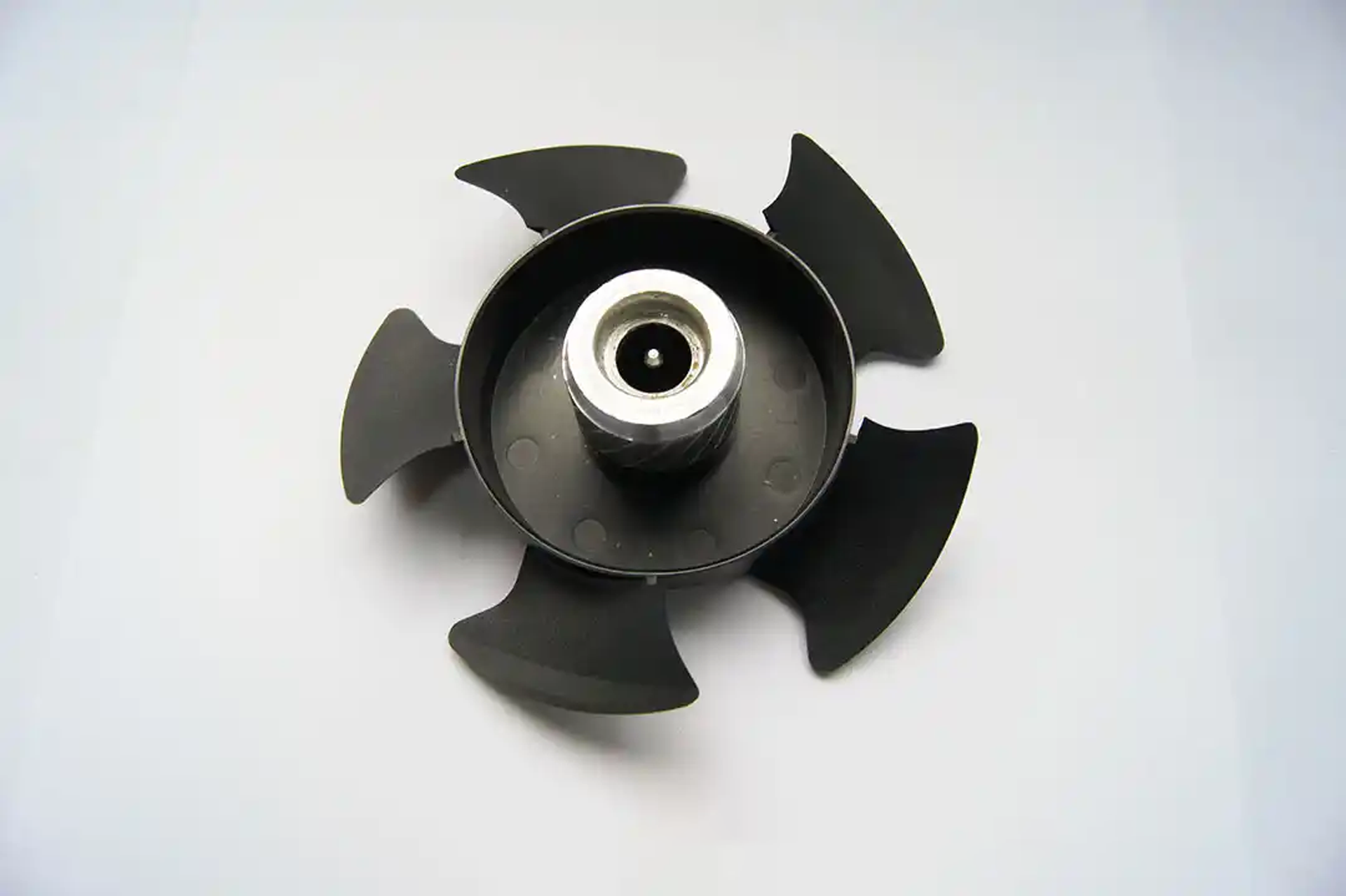DC centrifugal fans are widely used across various industries, from air conditioning and ventilation systems to industrial equipment, where their performance is critical. The design of the fan blades plays a decisive role in determining the fan's efficiency and functionality. Based on their shape and structure, DC centrifugal fan blades can be categorized into three types: forward-curved, backward-curved, and radial. Each type has its unique advantages and suitable applications. Below, we will explore the characteristics of these blade types and analyze how different adjustment methods impact fan performance.

Types of DC Centrifugal Fan Blades
1. Forward-Curved Blades
Forward-curved blades are typically compact and suitable for applications with high space and installation constraints. These blades have a high pressure coefficient, enabling them to generate significant pressure, making them ideal for low-flow, high-pressure scenarios. However, due to the higher proportion of dynamic pressure in the total pressure, forward-curved blades have lower power and efficiency. They are cost-effective due to their simple design and lower manufacturing costs.
Advantages: High pressure coefficient, suitable for high-pressure, low-flow applications.
Disadvantages: Lower power and efficiency, best for less demanding applications.
Applications: Cost-sensitive or less demanding equipment, such as household appliances and light industrial machinery.
2. Backward-Curved Blades
Backward-curved blades can be further divided into single-plate and airfoil types. These blades have a larger design structure and a relatively lower pressure coefficient but offer higher power and better efficiency. The lower proportion of dynamic pressure in the total pressure allows them to balance airflow and pressure effectively, making them suitable for long-term, high-efficiency applications.
Single-Plate Backward-Curved Blades: Designed for applications requiring high airflow at relatively low pressure, such as high-ventilation environments.
Airfoil Backward-Curved Blades: Featuring aerodynamic designs, these blades provide smoother airflow, lower noise, and higher efficiency, making them ideal for high-performance industrial equipment.
Advantages: High efficiency, suitable for high-performance environments, stable long-term operation.
Disadvantages: Higher cost and more complex design and manufacturing processes.
Applications: High-performance industrial equipment, ventilation systems, and applications requiring high pressure and airflow.
3. Radial Blades
Radial blades offer a middle ground between forward-curved and backward-curved blades. They provide a moderate pressure coefficient and power output, making them versatile for various applications. The higher proportion of dynamic pressure in the total pressure results in relatively high efficiency, and their manufacturing costs are generally moderate.
Advantages: Suitable for applications requiring high efficiency with moderate airflow and pressure, cost-effective.
Disadvantages: May underperform in extreme high-flow or high-pressure scenarios compared to backward-curved blades.
Applications: Medium-sized equipment or environments with stable ventilation needs, such as commercial air conditioning systems and air purifiers.
Adjustment Methods for DC Centrifugal Fan Blades
Adjusting the blade angle (inlet angle) is a key factor in optimizing the performance of DC centrifugal fans. It allows for effective control of airflow, pressure, and efficiency, ensuring the fan meets specific application requirements.
1. Adjusting Inlet Airflow Direction (Pre-Swirl and Counter-Swirl)
Pre-Swirl Adjustment: The fan blades rotate in the same direction as the inlet airflow. By adjusting the inlet guide vane angle to zero, the fan operates in a low-flow, low-pressure mode, suitable for small equipment or low-load applications.
Counter-Swirl Adjustment: The fan blades rotate in the opposite direction of the inlet airflow. Adjusting the blade angle increases airflow and pressure output, making it ideal for applications requiring higher flow and pressure, such as industrial and large-scale equipment.
2. Adjusting Blade Angle
Blade angle adjustment is a critical method for influencing fan performance. Different angles alter the airflow entry angle, affecting compression performance and airflow output. Common adjustment methods include:
Continuous Adjustment: Allows flexible blade angle adjustments to suit varying operational conditions, optimizing airflow and pressure output across different scenarios.
Fixed-Angle Adjustment: Suitable for applications with constant load requirements, where the blade angle is fixed to meet stable airflow and pressure needs.
3. Adjustment Characteristics of Forward Multi-Wing and Backward Blades
Forward multi-wing DC centrifugal fans generally offer better adjustment characteristics compared to backward-curved blades. The wide adjustment range of forward multi-wing blades optimizes fan performance across various operating conditions, ensuring high efficiency. This makes them particularly suitable for applications requiring flexible airflow and pressure adjustments.
Summary and Advantages of Ruiapple Electric
The design and adjustment methods of DC centrifugal fan blades are crucial for overall fan performance. Different blade types excel in various working environments, while blade angle adjustments optimize airflow and pressure output. Proper adjustment not only enhances efficiency but also extends the fan's lifespan.
As a professional manufacturer of DC centrifugal fans, Ruiapple Electric is committed to providing efficient, stable, and low-noise fan solutions. Our products are crafted with high-quality materials and precision engineering, ensuring excellent performance across diverse operating conditions. We offer a variety of blade types and customized services to meet the unique needs of different applications, helping customers achieve optimal cooling and energy efficiency.






